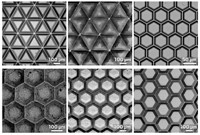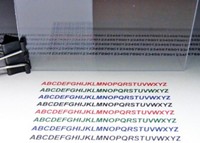Advertisement
Grab your lab coat. Let's get started
Welcome!
Welcome!
Create an account below to get 6 C&EN articles per month, receive newsletters and more - all free.
It seems this is your first time logging in online. Please enter the following information to continue.
As an ACS member you automatically get access to this site. All we need is few more details to create your reading experience.
Not you? Sign in with a different account.
Not you? Sign in with a different account.
ERROR 1
ERROR 1
ERROR 2
ERROR 2
ERROR 2
ERROR 2
ERROR 2
Password and Confirm password must match.
If you have an ACS member number, please enter it here so we can link this account to your membership. (optional)
ERROR 2
ACS values your privacy. By submitting your information, you are gaining access to C&EN and subscribing to our weekly newsletter. We use the information you provide to make your reading experience better, and we will never sell your data to third party members.
Coatings
A simple method yields a wrinkly, water-repellent surface
Depositing Teflon on shrinkable plastic creates a durable, superhydrophobic coating
by Katherine Bourzac
March 7, 2016

Superhydrophobic coatings that make water droplets dance and roll off of a surface show promise for applications such as self-cleaning cars, buildings, and food processing equipment. A new method creates such coatings by combining two common materials—Teflon and a shrinkable plastic—in a few simple steps (ACS Appl. Mater. Interfaces 2016, DOI: 10.1021/acsami.5b12165).
For about 15 years, materials engineers have been using the tools of nanotechnology to create exceptionally water-repellent surfaces. They carve tiny features into materials that trap layers or pockets of air, which keeps the surfaces from getting wet. These coatings perform well in the lab, says Chiara Neto, a surface chemist at the University of Sydney. However, their carefully wrought surfaces are easily scratched or otherwise damaged, destroying their ability to repel water.
The key to a good superhydrophobic surface is a combination of micro- and nanoscale patterns that work together to repel water. While listening to a research talk at a conference, Neto realized that a wrinkled surface could have those kinds of patterns. The presenter, Leonora Velleman, now of Imperial College London, was using the polystyrene sheets found in Shrinky Dinks—a children’s crafting kit—to create crinkled gold films.
Neto decided to try using the same method to make a wrinkled surface with Teflon (polytetrafluoroethylene), instead of gold, since it’s both cheaper and more slippery. Neto’s lab deposited Teflon onto two kinds of shrinking plastic. One, called PolyShrink, comes in sheets that can be drawn on and easily cut to shape. When heated, the polystyrene material contracts by 30%. The researchers also tried a shrink wrap made of polyolefin that’s used as a packaging material. This material shrinks to 10% of its size when heated.
Neto spin-coated a Teflon solution onto 3- to 5-cm2 pieces of PolyShrink, and then heated them to 160 °C. She heated coated polyolefin squares to 110 °C. As each type of polymer shrinks, the tightly bonded Teflon layer wrinkles. The whole process takes two or three minutes. Neto’s group made coatings with different thicknesses of Teflon and tested their hydrophobicity.
The combination that repelled water most effectively was polyolefin shrink wrap coated with a 10-nm-thick layer of Teflon. After it’s shrunk, this surface is coated with Teflon wrinkles tens of nanometers in size, on top of larger folds a few micrometers across. The material induces droplets that contact the surface at 172 °, meaning the water beads are nearly perfectly round and barely touch the surface.
Crucially, the superhydrophobic coating is durable, having about the same scratch resistance as an aluminum coating. And when scratched, it’s still water repellent. “We were surprised the surfaces ended up so robust,” Neto says.
“The idea is interesting and clever,” and the surfaces have good properties, says Guihua Yu, a mechanical engineer at the University of Texas, Austin. Yu says it remains to be seen whether this kind of coating can be put onto other surfaces—the exterior of a car, for example.





Join the conversation
Contact the reporter
Submit a Letter to the Editor for publication
Engage with us on Twitter